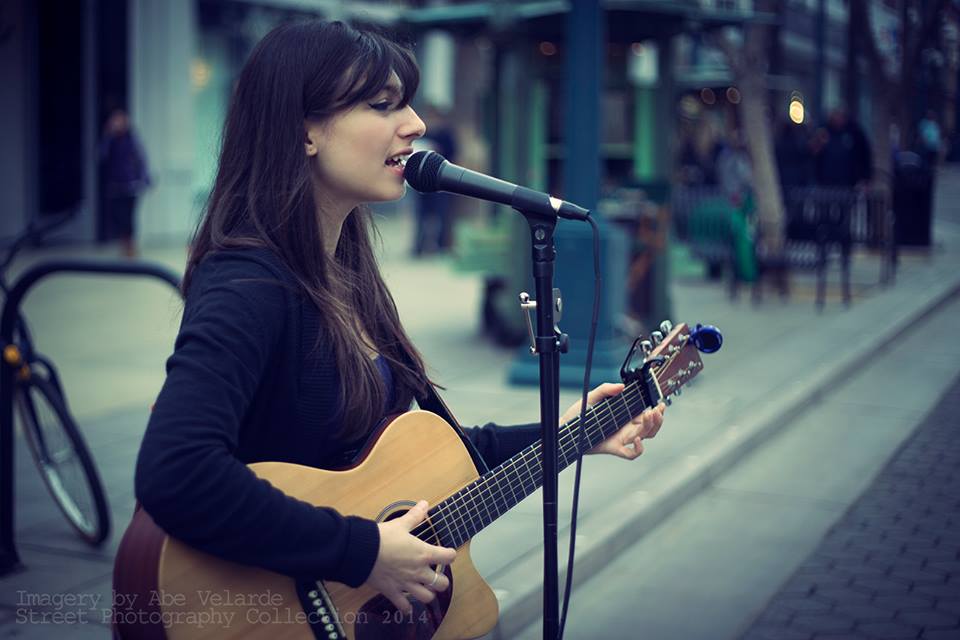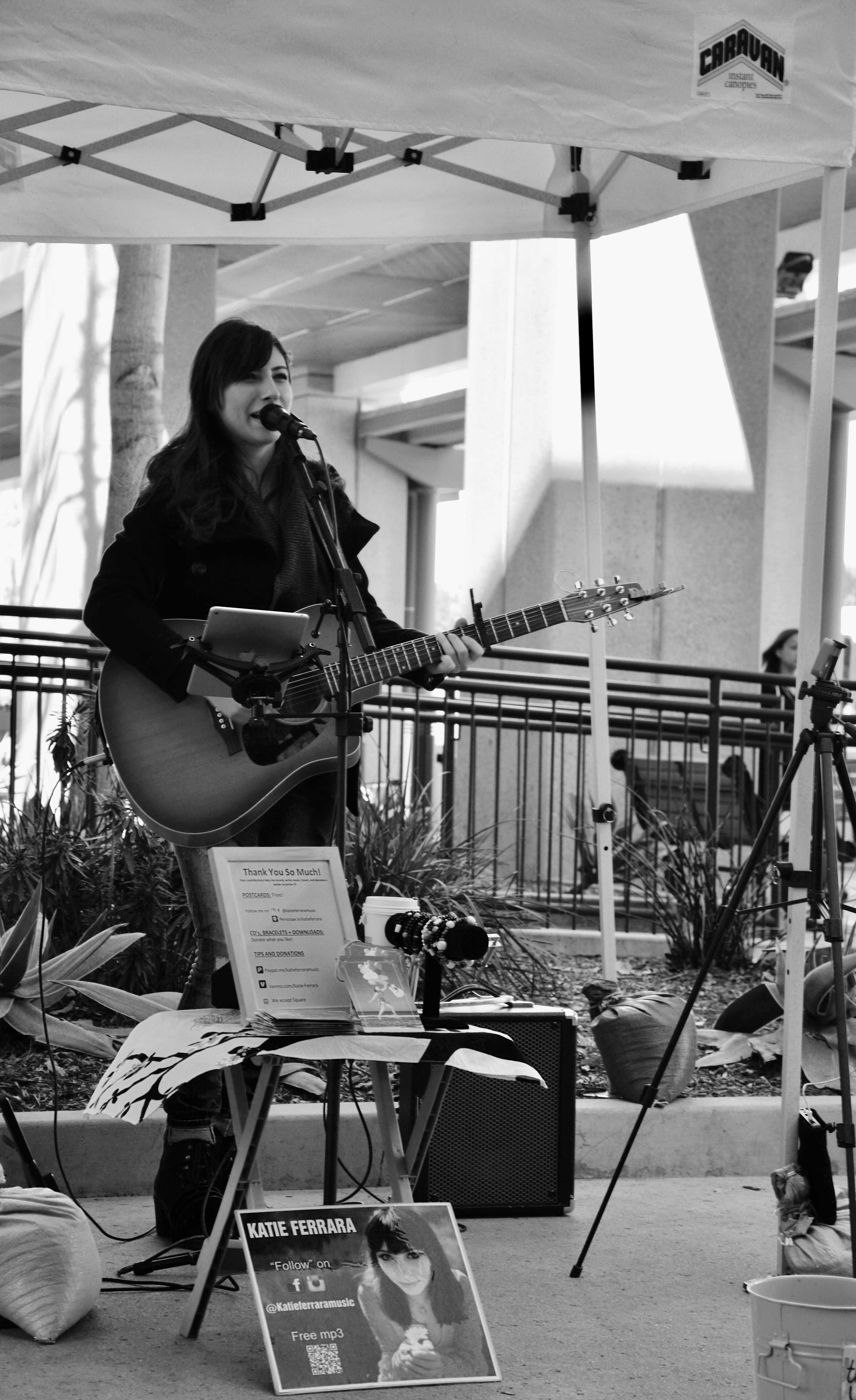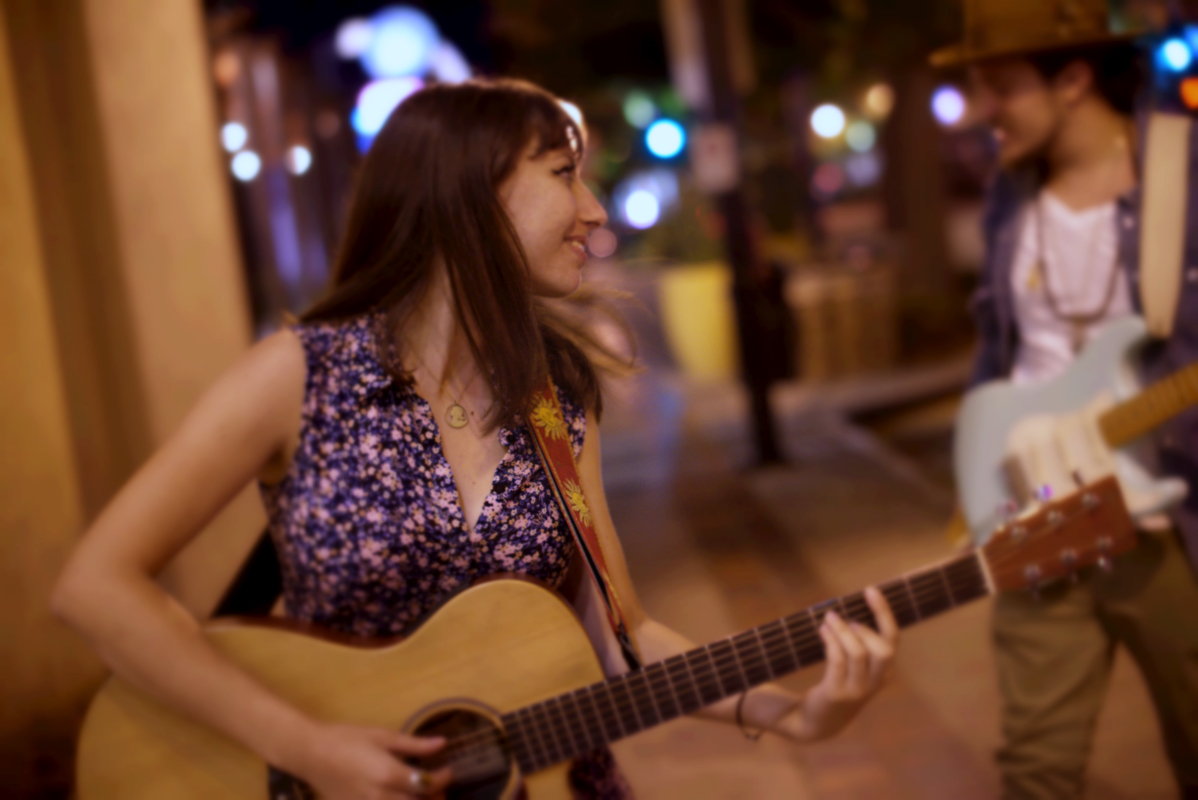“If you’re ever feeling down on yourself that no one is stopping by or giving you tips, just remember that Joshua Bell, one of the most famous violinists in the world, played a $3 million violin in a D.C. subway station for 43 minutes (incognito), and only made $32 from 27 people (as 1,070 others hurried by, ignoring one of the greatest living violinists playing some of the most challenging pieces ever written on one of the most expensive instruments in the world).”
– Ari Herstand
This is a book review of How to make it in the New Music Business by Ari Herstand (buy it here). Katie Ferrara, who is featured in the book, has been a street performer for many years.
What makes How to Make it in the New Music Business different
Nick Broad: When How Music Works by David Byrne came out – marketed as a full breakdown of the music industry – I perhaps naively thought that it would contain some mention, at least, of street performing. I was wrong. The book completely overlooked the world’s most common, secure and economically impactful part of a new musician’s business plan.
This is why it was so refreshing to be told by busking superstar Katie Ferrara that Ari Herstand’s book, How to Make it in the New Music Business, included a chapter on busking. Here is a guy who’s not just focusing on the traditional industry, but providing real advice on how to survive – and thrive – as a start-up musician.
I asked Ari whether he believes that busking should, now, hold a more respected place in the industry, considering what has been happening to the industry’s traditional revenue streams. His answer was enlightening:
Any way an artist can make a living in a way that brings joy, purpose and satisfaction is respectable. There is no “right” or “wrong” way to make a career in the new music business. Because every artist has different strengths and interests, they need to do what’s right for them. What works for me may not work for you. What works for you may not work for me.
But the beautiful thing about the new music business is that you can have a successful career doing things a bit differently. Pleasing yourself first and always. Don’t allow anyone to tell you that how you’ve structured your career isn’t acceptable. Because if it’s working and you’re happy, then you’re set.
We asked Katie Ferrara (who’s featured in the book) to do a short review for us. She’s not just a good singer/songwriter, but she has one of the most professional set-ups we’ve seen (check the 3rd photo of her street-rig below).
[Editor’s Note: one of the main take-aways from the book is that you should use an online donation system. You can do that with your profile on busk.co. Sign up here: busk.co/signup]

Katie Ferrara: How to Make it in the New Music Business is is a great practical resource to anyone who works hard and is looking for a creative way to make money from their music. Here are my biggest takeaways:
1. Prepare for setbacks
Ari Herstand opens the book discussing the challenges artists face in the new music business, such as age, having a day job/back up plan, people not caring, etc. Ari writes from the perspective of an artist, not some balding music business executive who hasn’t ever played a live show. He is definitely one of those people who learned a lot about the industry by playing in it himself.
I’ve experienced the same scenarios he wrote about in the opening chapters. When I am busking, I often get asked “are you trying to be a musician?” They don’t see what I’m doing as a real job.
Also, people are surprised when I tell them how old I am; I get the feeling that most people think that being an artist is something you do in your early 20’s for fun. And your family may not be supportive, especially if you aren’t making money straight away. It was comforting to read in How to make it in the New Music Business that Ari had faced the same struggles as I had when I began my career.
2. There are a lot of myths in the industry
Ari then exposes some music industry myths, such as “you need a label to be successful”. Before the internet, the only way for an artist to gain exposure would be to obtain a record deal. This isn’t true anymore; you can now grow a community of fans online. The internet enables us to reach out to an audience of people we wouldn’t normally have access to.
The downside is that much of your time as an artist may be spent online. I often hear my friends complain that they spend less time performing and more time on Facebook and Instagram trying to get likes on their pages or gain followers.
This is something busking helps me with; I can be paid for playing to people, traveling, and living my life, while building a fan base! I’m not saying to ditch the internet, because Ari lays out some practical tips on how to use it to create additional streams of income (yes, you can still make money as a musician today!). But busking sets street performers apart from other artists in that we get constant face to face interaction.
Also, although the internet can be an introduction to fans, you need to find a way of turning that relationship into attendance at your live shows. This is difficult nowadays because people don’t go out to see music unless they already know the band. But, when you meet people while busking they are more likely to remember you and want to come out to a show to support. It’s all about being accessible both in real life and online.
3. Have a good team around you
How to Make it in the New Music Industry stresses the importance of learning the business side of the industry, then finding the right team of professionals to work with. Artists need to know how to be their own booking agent, publicist, and manager until they are making enough money to pay other people. There are a lot of different outlets artists can use to make money, from college touring, film and TV placements, booking shows, merchandise sales etc.
Since deciding to do my music full-time, I’ve learned how to do so much on my own. For example, one day I would like to tap into the college market and for that I would need an agent. But right now I’m focusing on building fans through busking and my online presence. There are so many ways that artists can exchange skills and expertise these days that sometimes you don’t necessarily need to pay someone or be signed to a label in order to reach your goals.
4. Pre-release, and get ‘super-fans’
My favourite chapters of the book are the ones that cover the steps an artist needs to take to release an album. This section of the book was very helpful because before I did my crowdfunding campaign last year, I would just put music online and expect fans to just buy it. I didn’t realise that the new music business is about the “pre-release” and as an artist you must invest your time into building relationships with ‘Super-Fans’. Buy the book to get these ideas explained better! 🙂
5. Busking is a relevant part of the music industry
There is a small section on busking, which stands out because most people don’t consider it to be a “real job” in the music business. It’s just another creative way of connecting with fans outside of a traditional music venue. Ari interviewed me for this section, and used some of what I said, as well as his own experience busking in Santa Monica, to create marketing guidelines to maximise tips and CD sales in the street.
6. Connect your audience to your online network
Buskers need to have some sort of connection between their street and online audiences. Ari encourages buskers to set up a mailing list and collect email addresses. And even if pedestrians don’t stop to talk, they should be able to find your website and social networks. Hang a large poster with your name, a professional live shot of you and you social links. You can also add a snapchat or QR code.
From my experience, I get the feeling that people don’t want to interrupt me while I’m singing or are too shy to come up and talk to me. My sign has sometimes been a great way to start relationships with fans. All they have to do is take a picture of it while walking by (check out the photo below to see how I do it).

7. Don’t just take physical donations
You also should have the option of tipping online via Square, PayPal, or Venmo. He also mentions different merch packages you can display on your table which are centred around the $20 bill (however, I think this merch package strategy might only work if you are busking in a busy area).
I don’t even have a price on my CDs anymore. I just tell people to donate what they like, and usually I will get more for a CD that I would have gotten if I asked for a specific amount. Be warned, though; most places where there isn’t a community of buskers playing don’t allow you to “sell” music.
8. Have a professional delivery
Ari discussed some creative ways to market yourself as an artist in the street (instead of being some nobody trying to prove themselves to strangers passing by). The more professional you are in your delivery, the more people will take you seriously and remember you. A lot of the principles that he mentioned also apply to playing shows in clubs. I just thought it was admirable that he constructed some guidelines to a profession widely thought of “not a real job”.
9. Use similar strategies to those used by small businesses to market your products.
I’ve spent a lot of time playing at street fairs and farmers markets in LA, and it made me realise that my business isn’t much different from any other small business, be it a small jewellery company, clothing line or food truck. When I play at street fairs, many of the vendors have booths with similar displays that Ari mentions: a clear sign, business cards, flyers, and product packages.
They set up at street fairs to educate the public about what they do and direct customers to their online stores. The key similarity I see between these small businesses and the being an artist is accessibility. The more personal connections customers can make to your ‘brand’, the more they will want to support you.
It seems like extra work, but I truly believe that if you go the extra mile to meet people face to face, you will be remembered for your authenticity and people will buy your music. People want to get to know the artist behind all the trendy pictures and video of them online. Get to know your customers and community through busking!

